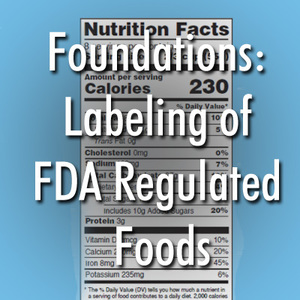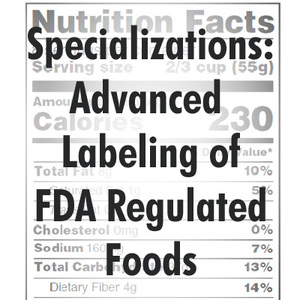Changeover Allergen Cleaning Challenges and Options

Undeclared allergens are a leading reason for recalls in the global food industry, with huge financial loss to involved parties. An estimated 250 million people around the world are affected by food allergies. Once ingested, a food allergen triggers an immune response in an allergic person, causing reactions that vary in severity from mild (e.g., hives) to severe (e.g., throat swelling, difficulty breathing, or anaphylactic shock). Even the faintest amount of the allergen present can be lethal to a highly allergic person.
Each country has its own food regulations and recognizes different allergens. There are eight regulated allergens in the U.S., 14 in the European Union, 13 in Australia and New Zealand, and six in Japan, with voluntary labeling recommended for 20 other foods.
Production Planning
Managing allergen changeover can be very challenging in a food plant, especially when different allergens are handled on the same line or piece of equipment. So production planning techniques are usually used to reduce necessary changeovers. For example, production runs would always be scheduled beginning with formulas with the least amount of allergens and moving to those with more allergens. However, if different allergens are involved, the situation becomes tricky. Precautionary labeling which includes declarations such as “may contain” or “produced in a plant that handles” should not be used as an excuse for poor good manufacturing practices. Proper line cleaning and sanitation at changeover and application of an allergen control program are key to help avoid allergen cross-contamination.
Other allergen solutions might include intentionally adding all the allergens so that cross-contact is no longer an issue, however that leaves allergy sufferers with considerably fewer food choices.
“Even the faintest amount of the allergen present can be lethal to a highly allergic person. ”
Dedicated Lines
Using dedicated lines is the perfect solution, however it is not financially feasible in most cases, especially if some allergens are involved in low quantity or infrequent production runs. Even if dedicated lines are used, an allergen control program still needs to be implemented to avoid other means of cross-contact.
Cleaning and Sanitation
Having considered all alternative options, the best solution is to develop a solid cleaning and sanitation program as well as an allergen changeover cleaning program that defines frequencies for verification and validation.
Types of Surfaces
Choosing an effective cleaning method depends on the surface type to be cleaned, the contamination type (liquid, powder, etc.), and any specific allergen being handled. Surface clean-ability mainly depends on absorbency and smoothness. With allergen cleaning, even a small cross-contact surface area or quantity may still cause trouble, and subsequent process steps will not mitigate the risk.
Following are examples of a few common surfaces:
- Stainless steel surfaces are usually much easier to clean since they are smooth, but this is not always the case as mesh conveyor belts may be involved. Also, if there are any poorly welded parts with spots or tacks, proper sanitation may still prove to be tricky.
- Plastic surfaces are easily cleaned when they’re new and in good condition, however after time they wear and become damaged, dramatically increasing the chance for cross-contamination issues.
- Fabric surfaces are hardest to manage from an allergen changeover perspective, especially in direct product contact areas (e.g., conveyors or product holding trays). In this case, an efficient solution would be to use dedicated fabric items, however that might not be viable in terms of time required to manage the changeover. Effective cleaning verification would need to be carried out to ensure efficiency of the cleaning process.
Forms of Allergens

Another challenge during cleaning and handling processes is the form of the specific allergen. There is a great difference in handling a solid material, a liquid form, a powder ingredient, or even a particulate form (such as chopped nuts). This has to be considered during the development of the cleaning process, along with the chemistry of the allergen in question, before selecting cleaning methods or sanitizers. For example, compressed air is not recommended for cleaning at a site where powder ingredients are handled, so scraping, vacuuming, brushing, or wiping should be used if dry cleaning is used.
Verification
When a solid cleaning procedure has been developed, sanitation verification that includes frequencies, swabbing surfaces, and testing finished products needs to take place. This detailed plan should include the hardest-to-clean areas to ensure program effectiveness. Preferably, testing should be done with allergen-specific Elisa kits rather than ATP testing which can only be used as a general indicator and is not directly related to allergens.
Product Purge
Another way to handle the cleaning or allergen changeover process includes product purge cleaning which, in some processes, is the only method that can be applied. This method depends on the time and volume of material pushed through.
Product produced during the sanitation verification process should be held until test results are obtained. An efficient way to handle this process and eliminate production waste is to label the allergens in question in the ingredient list until tests have proven the finished product to be free of the specific allergens in question.
Sustainability
Having considered all the options and methods available for efficient allergen changeover, a facility still needs to consider the sustainability of the process in terms of manpower and time required to get effective results. Some parts of equipment might be too difficult to handle from an allergen management point of view. In this case, options may involve either eliminating a specific product or including the allergen in the product formula as the only possible solution to ensure consumer safety. This solution should be used only if no other methods are viable, not as an excuse for poor application of good manufacturing practices.



